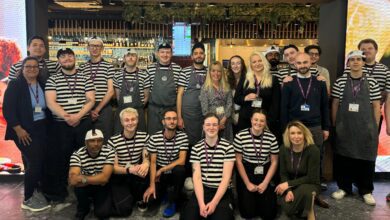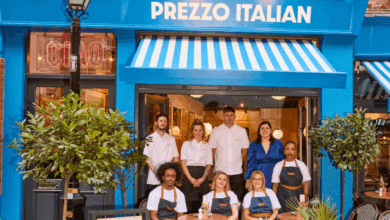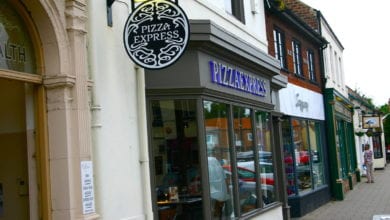The evolution of a brand – A fine line to follow
By Richard Samarasinghe, head of Business Development, Harrison

Register to get 1 free article
Reveal the article below by registering for our email newsletter.
Want unlimited access? View Plans
Already have an account? Sign in
When you think about the world of hospitality in the UK, cast your mind back over the last 20 or so years and remember the brands which have dominated our high streets. Frankie & Benny’s, Pizza Express, Café Rouge, Chiquito, Prezzo, Cote – all names which once would have been known by the majority of UK diners, but today are either no longer with us or are shadows of the powerhouses they used to be.
Why? Because they lost focus on who their customers were and stayed the same, refusing, or unable to evolve.
Brand evolution is not a ‘nice to do’, but a must, especially if a hospitality business wants to continue to attract new customers and offer relevance to a new generation of diners. What the fresh-faced millennials wanted 20+ years ago is not the same experience that today’s Gen Z wants.
Brand evolutions come in different shapes and sizes, from dramatic transformations to slow and subtle changes. When approaching brand evolution, no matter how big or small, marketeers, operators and business owners should take a step back, complete a brand audit and consider exactly why they are making these changes and what they hope to achieve.
Chicken Shop, for instance, is a prime example of a successful complete overhaul in order to reach a new audience and deliver an enhanced and more authentic experience.
Previously known as Chick’N, the new owners wanted to create a new identity which would allow them to stand out from the crowd. Strategically the best solution was a complete brand redevelopment – from interiors to the website, and even a new name. This created opportunities to better share the story and narrative of Chicken Shop through the design, create an experience which would quickly engage consumers as to why this brand was different, and draw in customers from all ages, especially Gen Z’s. This has been recognised by being awarded a brand transformation of the year award.
Other businesses evolve at a slower pace of change. Take, for example, Nando’s. The look and feel of the first Nando’s restaurants was based on a simple Portuguese Taverna, a complete world away from the bright and vibrant colours, South African influence, and creative space you see today.
The fine line which Nando’s has managed to walk during its ongoing evolution has been not to make too many changes at once. When we look back over our archives, we can pinpoint key moments when the design of Nando’s went into a new direction or a standout design which would represent a new era of Nando’s. But overall, it’s been a gradual evolution that has retained its fundamental brand values and purpose of creating lasting happiness and changing lives together.
For example, when first moving away from the Portuguese taverna look and feel, the primary colours remained more muted but artwork – now a key focus point of any Nando’s – started to be incorporated. Slowly, new patterns, colours, commissioned pieces and artwork started to be built into each design, along with elements which represent the surrounding area. A considered, ongoing and gentle evolution of Nando’s means that today, it performs better than ever before and remains a firm favourite with many diners both in the UK but also around the world.
A brand evolution doesn’t have to be an expensive process. For many hospitality businesses, it can simply be about subtle tweaks and changes, or bringing in some fresh perspective.
For those considering or looking at how to evolve or refresh their space, the first piece of advice would be to understand your customers and their motivations. Consider and research your audience. Who are you trying to reach, and what other brands and businesses do they engage with? While restaurateurs shouldn’t try to ‘copy and paste’ from another restaurant or brand, it’s worthwhile spending time researching what USPs make them an attractive proposition.
Thinking about scale is also important – in order to reach your objectives, do you need to completely redevelop your space or will small changes work wonders? With budgets tight for many, bringing a restaurant or hospitality business back to life could be as simple as upgrading a menu design to meet changing food trends or even small tweaks to décor.
Lastly, think about the next five years. If an operator is going to look at a large-scale redevelopment or change, make sure to look to the future and incorporate plans for how you want your business to be perceived in five- or ten-years’ time.






